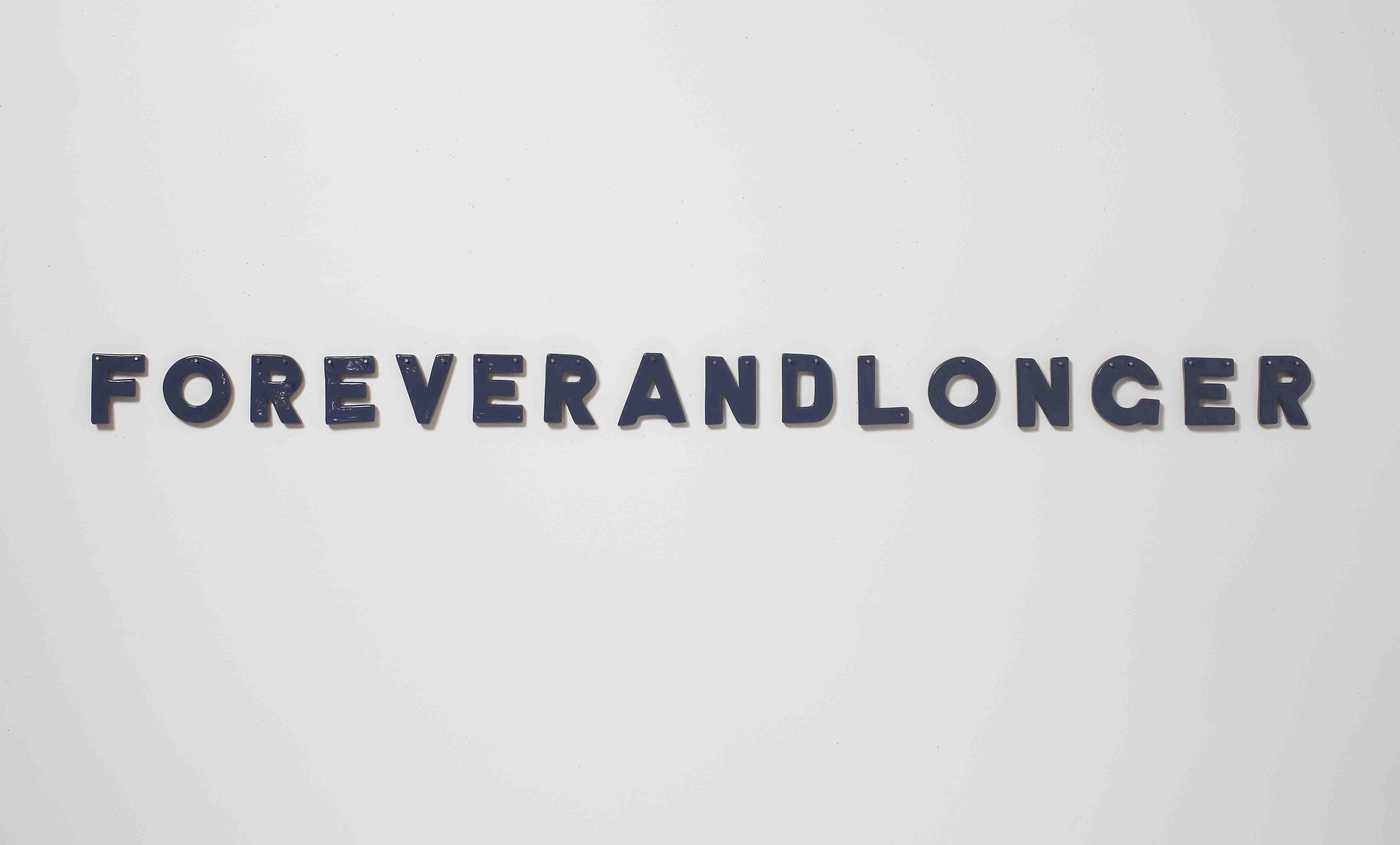Julia Chiang Makes Subtle Challenges

Julia Chiang’s latest exhibition opens today at the Paris boutique Colette [through May 5]. At first glance, Chiang’s delicate porcelain sculptures and vivid text pieces fit naturally amidst the store’s clean, bright retail environment. The objects reference decorative art and traditional handicrafts, while the words on the walls could easily be slogans from some ad campaign. Yet there is a heart tugging melancholy to a wall patterned with blood red teardrops, and the lovingly drawn phrase “ALL FOR YOU” sounds like a challenge more than a promise.
KEN MILLER: How did the show at Colette come about?
JULIA CHIANG: I had met Sarah [Lerfel] in passing over the years, but last summer we were talking a bit about my work and I sent her images of what I was working on. Fortunately for me, she was into the work, so she offered me a show!
MILLER: You’ve been associated with a lot of street artists during your career—how is your style of writing on the wall similar or different from what your peers do?
CHIANG: I’m friends with a lot of artists who started getting their work out using graffiti, but I’ve always worked in really controlled spaces and environments, you know? Sometimes I think of my text pieces like the sound you can’t shake from your ear, and that’s what these guys did, too. To me it’s more like something you have no option but to focus on. Like, it’s there, it’s yelling at you.
MILLER: Do you mostly draw inspiration from artists, or do handicrafts and other non-fine arts influence you too?
CHIANG: A lot of things outside of the art world inspire me. Probably more things out than in. It always amazes me to see how people can use similar materials in such different ways. Looking at and looking for traditional crafts and handmade tools are definitely part of my regular routine.
MILLER: What was the initial inspiration for your porcelain pieces, such as the chain you’re exhibiting at Colette or the apples you made with The Standard?
CHIANG: I have worked with ceramics the longest of all my materials. I’ve always been drawn to ceramics—how it can be both extremely fragile and strong. I feel like the material itself is similar to us in a way. It is the foundation for some of our most basic tools, while also being the source of some of the most luxurious decorative objects. Whether with ceramics, or works on paper, my process is similar: most of my work is repetitious and reveals the imperfections of my hand.
MILLER: How do you choose the phrases or words in your pieces?
CHIANG: I write notes all the time. Often I write a word that I can’t stop thinking about, and that gets combined with another word floating around. I write down bits of conversations I hear that make no sense out of context. Over time the collected phrases and my own mental notes come together.






